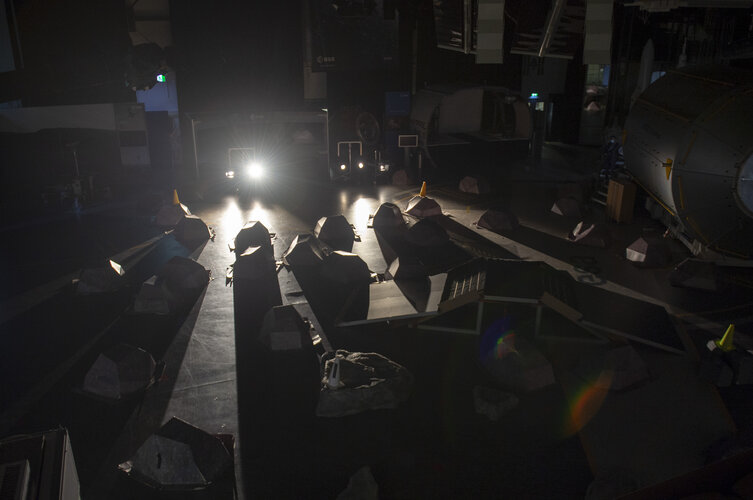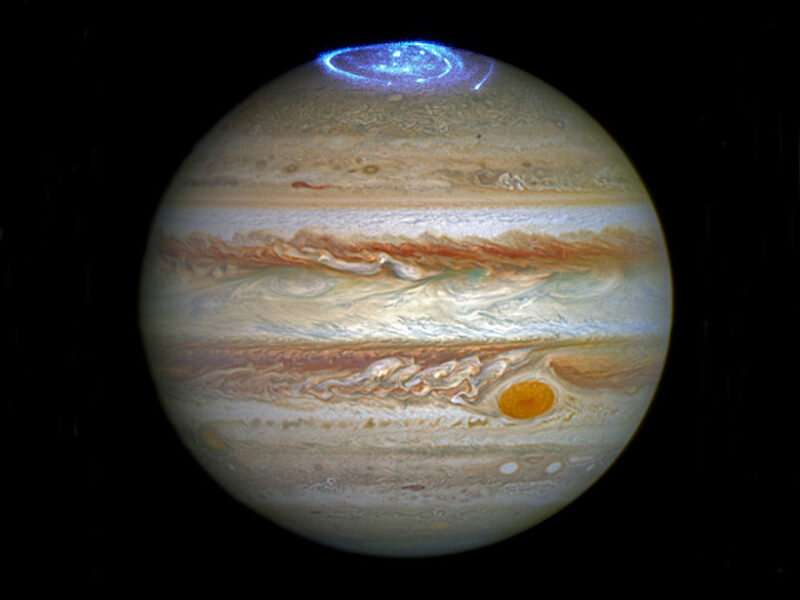
Copernical Team
Telespazio selects Hughes HeloSat for Airborne Satellite Communications
 Hughes Network Systems reports that Telespazio, a joint venture between Leonardo (67%) and Thales (33%), has selected the Hughes HeloSat solution for satellite communications (SATCOM) for Leonardo's helicopters.
The solution combines the Hughes HM100 gateway and the HM400 modem for SATCOM on-the-move with technical support and systems integration. Once installed on helicopters like the Leo
Hughes Network Systems reports that Telespazio, a joint venture between Leonardo (67%) and Thales (33%), has selected the Hughes HeloSat solution for satellite communications (SATCOM) for Leonardo's helicopters.
The solution combines the Hughes HM100 gateway and the HM400 modem for SATCOM on-the-move with technical support and systems integration. Once installed on helicopters like the Leo NASA robots compete in DARPA's Subterranean Challenge Final
 Led by NASA JPL, Team CoSTAR will participate in the SubT final this week to demonstrate multi-robot autonomy in a series of tests in extreme environments.
Eight teams featuring dozens of robots from more than 30 institutions, including NASA's Jet Propulsion Laboratory in Southern California, will converge in a former Kentucky limestone mine from Sept. 21 to 24 to participate in a series o
Led by NASA JPL, Team CoSTAR will participate in the SubT final this week to demonstrate multi-robot autonomy in a series of tests in extreme environments.
Eight teams featuring dozens of robots from more than 30 institutions, including NASA's Jet Propulsion Laboratory in Southern California, will converge in a former Kentucky limestone mine from Sept. 21 to 24 to participate in a series o A new understanding of galaxy evolution with the Roman Space Telescope
 Galaxies change over time, but those changes take millions or billions of years - far longer than the human lifetime. To understand how galaxies evolve, astronomers therefore need to study large numbers of galaxies at various stages. NASA's Nancy Grace Roman Space Telescope will revolutionize galaxy studies since it can survey the sky up to thousands of times faster than can be done with Hubble
Galaxies change over time, but those changes take millions or billions of years - far longer than the human lifetime. To understand how galaxies evolve, astronomers therefore need to study large numbers of galaxies at various stages. NASA's Nancy Grace Roman Space Telescope will revolutionize galaxy studies since it can survey the sky up to thousands of times faster than can be done with Hubble Tycho Crater revealed in intricate detail
 The National Science Foundation's Green Bank Observatory (GBO) and National Radio Astronomy Observatory (NRAO), and Raytheon Intelligence and Space (RI&S) have released a new high-resolution image of the Moon, the highest-ever taken from the ground using new radar technology on the Green Bank Telescope (GBT).
The resolution of the new Tycho Crater image is close to five meters by five mete
The National Science Foundation's Green Bank Observatory (GBO) and National Radio Astronomy Observatory (NRAO), and Raytheon Intelligence and Space (RI&S) have released a new high-resolution image of the Moon, the highest-ever taken from the ground using new radar technology on the Green Bank Telescope (GBT).
The resolution of the new Tycho Crater image is close to five meters by five mete US must prepare now to replace International Space Station
 Policymakers warned Tuesday that Congress must move quickly to extend the life of the International Space Station to 2030 and develop new space stations or risk a costly gap in space exploration.
Abandoning the space station, which is to be decommissioned in 2028, without replacements would only serve the interests of China, which has a new space station in orbit, U.S. Rep. Brian Babin,
Policymakers warned Tuesday that Congress must move quickly to extend the life of the International Space Station to 2030 and develop new space stations or risk a costly gap in space exploration.
Abandoning the space station, which is to be decommissioned in 2028, without replacements would only serve the interests of China, which has a new space station in orbit, U.S. Rep. Brian Babin, Gloomy moonscape for rover test
 Image:
Gloomy moonscape for rover test
Image:
Gloomy moonscape for rover test Soaring high: Pentagon's Space Force gets new uniform
The US Space Force unveiled its new dress uniform design Tuesday, aiming to make a future-forward mark for the Pentagon's newest uniformed service.
The prototype for the new uniform for the Space Force's Guardians, as they have been officially designated, is a short navy blue jacket with a large flap over the right breast, secured by a diagonal line of six silver buttons.
It has a standing collar, and the service badge, with a delta-shaped rocket pushing into a star, is worn below the left breast.
The jacket is matched with grey trousers or skirts.
"Modern, distinctive, professional" the Space Force called it in a tweet.
"Every winning team needs a uniform! We started with the female design and then created the male prototype," wrote Chief of Space Operations General Jay Raymond.
Tested by Guardians, made for #Guardians. #SpaceForce physical training uniforms are currently undergoing wear testing. pic.twitter.com/6agT93uGDH
— United States Space Force (@SpaceForceDoD) September 20, 2021
Launched officially in December 2019, the Space Force was organized to address challenges of fighting war in the exosphere, seen as a distinct theater from the air force.
Similar designs with diagonal buttons holding down breast flaps have been seen for centuries in European and American uniforms, and are donned with large amounts of braid by marching band drum majors today.
Scores of internet-providing satellites will soon streak across Canada's skies, but at what cost?

The night sky is going to get much busier thanks to thousands of new internet satellites set to launch over the next few years—and researchers say it's going to affect Canada more than most places on Earth.
Researchers from the University of Toronto, the University of Regina and the University of British Columbia found that most light pollution is expected to happen near 50 degrees latitude north and south due to the orbits of the new satellites.
NASA's mixtape for extraterrestrial civilizations

In 1977, NASA created two LP records with tracks of global music, greetings in different languages, sounds of the planet, and sonified images, and then attached them to the two robotic probes launched that year as part of the Voyager space mission bound for the outer solar system and beyond. This Golden Record, said Alexander Rehding, Fanny Peabody Professor of Music, is "effectively a mixtape for extraterrestrial civilizations, a sign that we exist and a glimpse of what human culture is about.
Could low-altitude reconnection power Jupiter's polar aurorae?

Like Earth, Jupiter's magnetic field channels electrically charged particles into its atmosphere, resulting in the formation of brilliant aurorae near its poles. However, the brightness and variety of Jupiter's auroral emissions exceed those generated on our planet. Of particular interest are patches of emission that originate from even closer to the poles than the main aurorae, a feature that appears far stronger at Jupiter than at Earth or Saturn.
